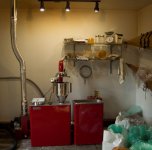wwcove
Banned
Does anybody like the fluid roasters such as the Artisan 6 by Coffee Crafters? I know it's not real heavy duty & all manual but if it can roast 20-30 lbs per hour it seems interesting. I know that fluid roasts and drum roasts produce different tastes in the coffee but does anyone think this unit might be worth checking out? Or does anyone currently use this machine?
I have seen a couple threads from their old model but nothing new about current model.
If you have used it or own it can you share your honest opinion?
I have seen a couple threads from their old model but nothing new about current model.
If you have used it or own it can you share your honest opinion?

